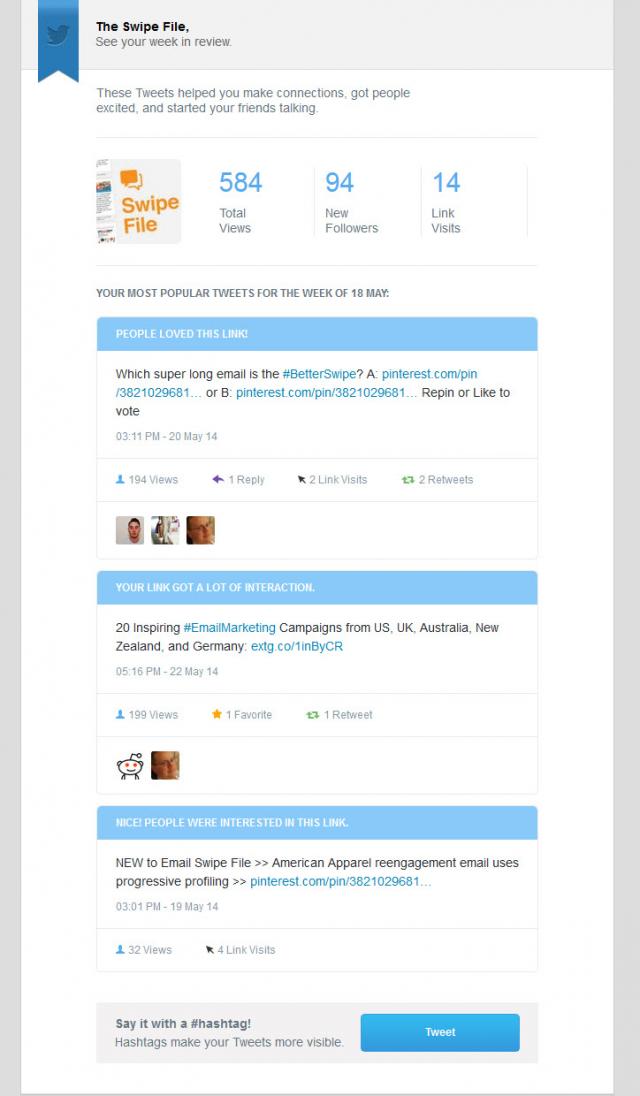
Get your FREE 30-day trial.
Please complete all fields.
Email content personalization has come a very long way. I remember back around a decade ago when personalization was synonymous with first-name merges. Now there are so many ways to personalize messages for individual recipients.
Here are six aspects of your subscribers by which to personalize your emails to them:
1. Who They Are. Even the old-style first-name merge has evolved over the years. Now you can personalize images, as in this Starbucks email, which is included in the 2014 Best of the Email Swipe File report. You can even personalize animated gifs, as in this Helzberg Diamonds email.
And, of course, who your subscriber is also includes data points like their birthday and what company they work for. For example, this Pizza Express birthday email is triggered by a recipient's birthday and includes a personalized image and alt text. And this IVCi email contains personalization for who the recipient is, they company they work for, and the name of the recipient's sales rep.
2. Who They Care About. While most personalization opportunities are directly about the subscriber, their wider sphere of family members, friends, and work associates also provide occasions for personalization.
For instance, LinkedIn sends many emails about your connections, including this 2013 email about connections who had changed jobs. FetchDog uses the names of pets in emails to their owners, as in Subject Line #51 from 100 Inspiring Subject Lines. And ToyTalk sends parents emails about what their kids say when they interact with their mobile app.
3. What They Did. A subscriber's actions offer many fruitful opportunities for personalization. Combining this flavor of personalization with behavior triggered emails creates highly compelling messages.
For example, this loyalty email from Panera is personalized with the number of times the recipient has eaten at the restaurant during the current month. This Fitbit email is personalized with the subscriber's physical activity as collected via their wristbands. And Reliant Energy emails include power usage information and trends based on their subscriber's household usage.
4. What Others Did in Reaction. With the rise of social media, people are increasingly interested in how their actions affect others. This offers an exciting new avenue for personalized content.
 For instance, TripAdvisor sends you updates on the impact of your reviews as a way of spurring you to review more. And Twitter sends weekly emails that detail how people reacted to your tweets so you can see what kinds of content they're responding to most, as you can see with this example from our new @ETswipefile Twitter account for our Swipe File.
For instance, TripAdvisor sends you updates on the impact of your reviews as a way of spurring you to review more. And Twitter sends weekly emails that detail how people reacted to your tweets so you can see what kinds of content they're responding to most, as you can see with this example from our new @ETswipefile Twitter account for our Swipe File.
5. What They Have. You can also personalize email content based on what subscribers have-be it an account balance or a product they own.
For example, Moosejaw sent this well-timed rewards balance email during the holiday season to spur another gift purchase. Kiva, a microfinance company, sends emails personalized with the account balance to nudge subscribers to loan that money out. Crate & Barrel sends product care instructions for some products, knowing that it will be handier in email form than on paper. And Volkswagen sends emails personalized for you and your vehicle that tell you how to change your car's clock for Daylight Saving Time.
6. Where They Are. Because of mobile, location will play a significant role in personalization in the future. Geolocation is just getting started. But even without that, location information provided by subscribers can be used to personalize content.
For instance, Nextdoor provides neighborhood information in their emails that are personalized to your location. And in this email, Timberland used live content to include local weather information that was tailored to each subscriber's location.
Personalization is a key way to increase the relevancy of your emails. How many of these six subscriber aspects are you using to personalize your emails?